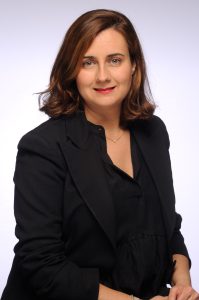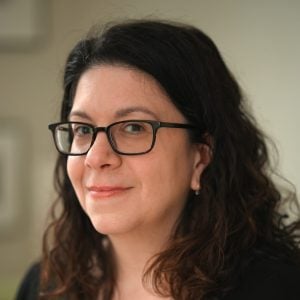In this installment of our Admissions Director Q&A series, we welcome back Teresa Peiro-Camaro, Associate Director of Global Admissions at INSEAD. Based in Fontainebleau, France, she leads the Admissions Office team, which oversees the admissions process for Degree Programmes and is responsible for the class composition for Executive Degrees and MBAs. In this role, she is responsible for ensuring that each INSEAD cohort brings together people, cultures, and ideas to develop responsible leaders who transform business and society. Teresa and her team accompany candidates along the entire application journey, helping them explore their driving motivation and fulfill their professional aspirations. Teresa joined INSEAD in 2011 as a programme coordinator. During her first three years at the school, she managed high-level executive education programmes for corporate clients. In this role, she ensured a best-in-class delivery to the satisfaction of all parties involved, including INSEAD faculty. Teresa holds a dual degree in Marketing and Finance from both the Universidad de Valencia (Spain) and Kedge Business School (France). She is a CCS Licensed Career Coach and completed the INSEAD Programme: “Management Acceleration Programme.”
Keep reading for Teresa’s insight into INSEAD’s MBA program, what to expect during the admissions process, and how to approach your essay and interview.
Clear Admit: What is the one aspect of your program that you wish applicants knew more about?
Teresa Peiro-Camaro: Business is clearly a force. At INSEAD we want to be sure that we are working towards, How can we make it a force for good?

Regulation is no doubt one part of the answer. The more promising part lies, however, in education. Business education must deepen the character and not only the competence of tomorrow’s business builders and leaders.
It is in this spirit that at INSEAD we’ve been developing and delivering a new set of courses over the past 3 years. The first in this series is IPP—Integrating Performance & Progress. How might business leaders embrace contradictions and make and justify tradeoffs? Taught jointly by a strategy professor and a philosophy professor, IPP educates students on how to integrate economic reasoning and moral reasoning. How to integrate competitive strategy and contributive strategy.
A second course in this series is C2C—Choosing To Care And Caring To Choose. Taught by a strategy professor and a moral psychologist, this course explores what character is and how it drives business choices. Character is about caring, commitment, and courage. Ultimately this course invites students to reflect on and develop their moral identity. Students learn that while performance is a consequence of decisions, progress is a consequence of choices.
A third course is WBW—Well-Being At Work. Well-being is auto-produced; it cannot be inherited or bought and sold on a market. Of course, context matters. And the workplace is an important context in which adults spend much of their waking hours. What practices and processes at work cause employee well-being, engagement, and security? How can work become family-centric? How can career and compensation more fairly reflect productivity and contribution? How can workplaces enable people to integrate money and meaning?
A fourth course in this series is CC—Caring Consumption. The premise of this course is that beyond producers, consumers must play a caring and active role as well. We cannot neglect the demand side. After all, each of us is a chronic consumer of the big 5—viz., food, apparel, housing, mobility, and technology. We cannot address issues related to health, environment, fair wages, etc, unless our consumption becomes more caring. And unless marketing consumer education.
These four new courses are finally supplemented by the possibility for students to engage in a consult-ship practicum at a real firm. Students who qualify and opt for the practicum have a chance to do a so-called P6, during which, over two months, they are assigned in trios to a major multinational firm to help that enterprise integrate performance & progress via a specific project. The students crystallize, concretize, and catalyze integration. Along the way they learn about how to take a moral concern and formulate creative and economically and technically workable alternatives. In the process, they learn the challenges of mobilizing collective action within and across organizational boundaries. Students who’ve done the practicum report that it’s been the best part of their MBA experience. More so than competence when it comes to character, there is a lot of learning by doing.
CA: Walk us through the life of an application in your office from an operational standpoint. What happens between the time an applicant clicks “submit” and the time the committee offers a final decision?
Teresa: Once the applicants click “submit,” they are welcomed by their Admissions Officer, who will be their point of contact with INSEAD throughout all their admissions journey and until they come to campus to kick off their MBA journey.
Firstly, the candidate will need to complete their file; their admissions officer will request the missing documents such as: degrees, transcripts, GMAT/GRE official scores and their video interviews. Once the file is duly completed, the preselection committee will decide who is invited to interview. The successful candidates will receive an email from their admissions officer with the contact details of both of their interviewers. Currently, we are transitioning from online to face-to-face interviews; therefore, when possible, the interviewers and candidates will be based locally. We aim to reflect our commitment to diversity by pairing interviewers with candidates who bring different perspectives in terms of gender, background, and culture.
As soon as we receive the feedback from our interviewers the files are submitted to the MBA Admissions Committee, who will deliver a decision, and this will be communicated to the candidate. This process should not take more than 10 weeks, since the submission of the application till the final decision is delivered.
CA: How does your team approach the essay portion of the application specifically? What are you looking for as you read an essay? Are there common mistakes that applicants should try to avoid? What is one key thing they should keep in mind as they sit down to write?
Teresa: At INSEAD, we take great pride in our holistic admissions process, which focuses on understanding each candidate’s unique story, motivations, and aspirations. Our goal is to uncover what each individual brings to the classroom, enhancing the global experience.
Through essays and video interviews, we go beyond academic records and CVs, seeking qualities like communication skills, emotional intelligence, resilience, and teamwork—traits crucial for success in today’s rapidly evolving workplace.
This admissions cycle, we’ve made changes to encourage more authentic responses. We’ve added to the the extra-curricular essay question a video interview and redefined the ‘candid description of yourself’ prompt to focus on how candidates handle stress. These updates are part of our ongoing effort to better assess the soft skills employers value most.
My advice to potential candidates is to be fully aware of their story: Why do you want an MBA? Why INSEAD? And how will you contribute to the class? With these elements clearly defined, you’ll be well-equipped to submit a strong application.
CA: Could you tell us about your interview process? Approximately how many applicants do you interview? Who conducts the interview (students, admissions officers, alumni) and what is the nature of the interview (resume-based, application-based, behavioral)? Will your admissions interviews be in-person or virtual for the 2024-2025 admissions season?
Teresa: The goal of conducting two interviews with alumni from different backgrounds is to confirm the candidate’s fit with both the programme and the school. Once preselected, candidates already meet the admissions criteria. Our alumni’s role is to assess whether the INSEAD MBA aligns with the candidate’s needs and aspirations, and whether they will make the most of the experience. To enrich the process for both candidates and interviewers, we are now encouraging alumni to conduct these interviews face-to-face.
CA: What is your testing policy? Do you offer exam waivers? Why or why not?
Teresa: INSEAD does not offer exam waivers for the MBA, MIM, or EMBA programmes, all of which require a standardized test. We accept GMAT or GRE scores for our full-time programmes and also consider the EA for the EMFIN and EMBA programmes.
Given the fast-paced nature of our programme, we believe it’s essential to admit candidates who are academically prepared to fully engage with the experience. Standardized tests are also necessary to fairly benchmark academic performance across our highly diverse candidate pool.
CA: In the application data form, many schools ask for information about work experience, activities, hobbies, and much more. What advice would you give to applicants as they approach this component of the application process?
Teresa: I always mention to our potential candidates that at INSEAD we are looking for: motivated candidates, engaged students and proud alumni, and part of the holistic view is to understand who you are beyond your academic and professional experience. We have questions on the application form purely focused on understanding how they interact outside of their office or classroom.
CA: Tell us briefly about two popular courses at your institution.
Teresa: Private Equity: This course is designed for anyone who interacts with private equity firms or aspires to work within venture capital, buyout firms, entrepreneurial start-ups, high-growth companies, investment banks, consulting firms, or family businesses.
It provides an introductory overview of a wide range of topics and is taught using a case discussion format, supplemented by lectures and guest visits from private equity professionals. While not a finance course, it strikes a balance between the qualitative and quantitative aspects of private equity management.
Storytelling is a workshop where our students explore, practice and refine their storytelling from a personal and business perspective. They learn by doing and watching others; developing their own style in crafting and telling stories, contributing to their self-development. At ISNEAD we believe that Stories create bonds with your audience, be it colleagues, partners, friends, family or everyone in between and are essential to leadership.
The students are asked to reflect and reclaim the significance of their experiences to enrich their stories using creative writing techniques to structure clear, concise and impactful narratives. They are asked to adopt acting techniques such as voice, beathing and diction to enhance their presence and deliver their stories on stage with confidence and impact.
CA: Is there anything else you’d like to highlight about your MBA program or admissions process?
Teresa: I would like to highlight that at INSEAD is not only about deciding if the candidates are good enough or not for the programme, but more importantly if our programme and school is what they need and what they want and whether their motivation and goals for attending our MBA programme are realistic and achievable.
To have these motivations clear, I always encourage potential candidates to make themselves available to one of our in-house events, which our marketing & recruitment team organizes every 2 months approximately on our campuses. These events host a master class, presentations from the Student Life, Careers, and Admissions teams, as well as panels with our current students. As you can see it is a half-day event where potential candidates get to connect with the school and understand if our MBA is what you want and what you need.





